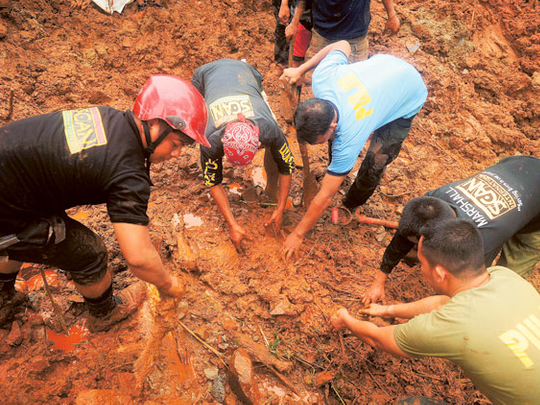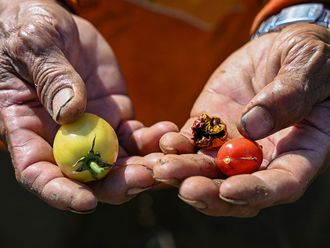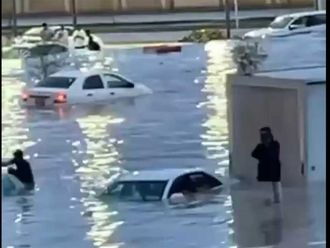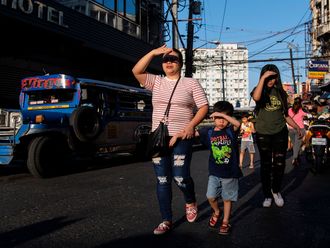
Manila: More than thirty people were confirmed dead in Zambales, central Luzon, due to continuous monsoon rains that began on Saturday, an official said, adding that the number of fatalities could double or triple since heavy rains also flooded and triggered landslides in the north and south.
Floods also paralysed Metro Manila.
A total of 34 people were confirmed dead, and four more remained missing in several villages in Zambales, Congressman Jeffrey Khonghun of Subic said on Tuesday.
Among the 11 bodies that rescuers found in a landslide incident in Cawag village, Subic, Zambales were husband and wife Danilo and Elvira Cojanan, and their four children, Khonghun told ABS CBN, a TV network.
Rescuers found six more bodies in San Isidro village in Subic, Khonghun said, adding that fatalities included two young boys, Joros and Joshua Ytak.
“We could not run when our house tilted before it was buried by a landslide,” their mother Rosalie Ytak also said in a radio interview.
Earlier reports said that nine were confirmed dead in Aglao and Banalawan villages in San Marcelino, Zambales; and four on Malaybalaya, Castillejos, also in Zambales. One was reported missing in Subic and four in Castillejos.
“It was the first time that we experienced this kind of rain,” said Khonghun, adding, “It was the first time that this tragedy happened here. The rain was too much.”
The weather station said the volume of rains that drenched Zambales on Monday alone was equivalent to what would ordinarily be received in a month.
The number of fatalities could double or triple if the toll from northern Luzon, southern Luzon, and Metro Manila is included on the list of the victims of southwest monsoon rains that were triggered by Typhoon Usagi as it left for China’s southern province on Monday, said the National Disaster Risk Reduction and Management Council, which has not yet released a comprehensive report on the effects of the monsoon rains.
All the areas that suffered landslides in Luzon were classified as unstable and not fit for residential use, said the mines and geosciences bureau of the department of environment and natural resources.
C-130 planes were sent to several damaged areas in the north, said presidential spokesman Edwin Lacierda.
The monsoon rains that were triggered by Typhoon Usagi, locally known as Odette, also hit hard Batanes at the northernmost tip of the Philippines.
Last Friday, the weather station placed Batanes under signal number four, after Typhoon Usagi turned into a super storm.
The typhoon’s effect was severe, considering that it never made landfall and hovered some 900 kilometres away from the eastern and western flank of northern Luzon. Telecommunication companies sent personnel to provide booster stations in Batanes because Typhoon Usagi disrupted mobile phone signals there, said Lacierda.
The monsoon rains affected 16,461 families or 72,696 people in 149 villages, 32 municipalities and eight cities said Undersecretary Eduardo del Rosario, head of NDRRMC.
By Tuesday, 14,468 families or 63,255 people had lost their homes. The majority of them, 14,347 families or 62,792 people, were placed at evacuation centres. Around 121 families or 423 people stayed with relatives and friends, said the department of social welfare.
The cost of damage to agriculture and infrastructure, including buried homes, could run to billions of pesos, said the NDRRMC.
More than 20 typhoons visit the Philippines starting June every year.












